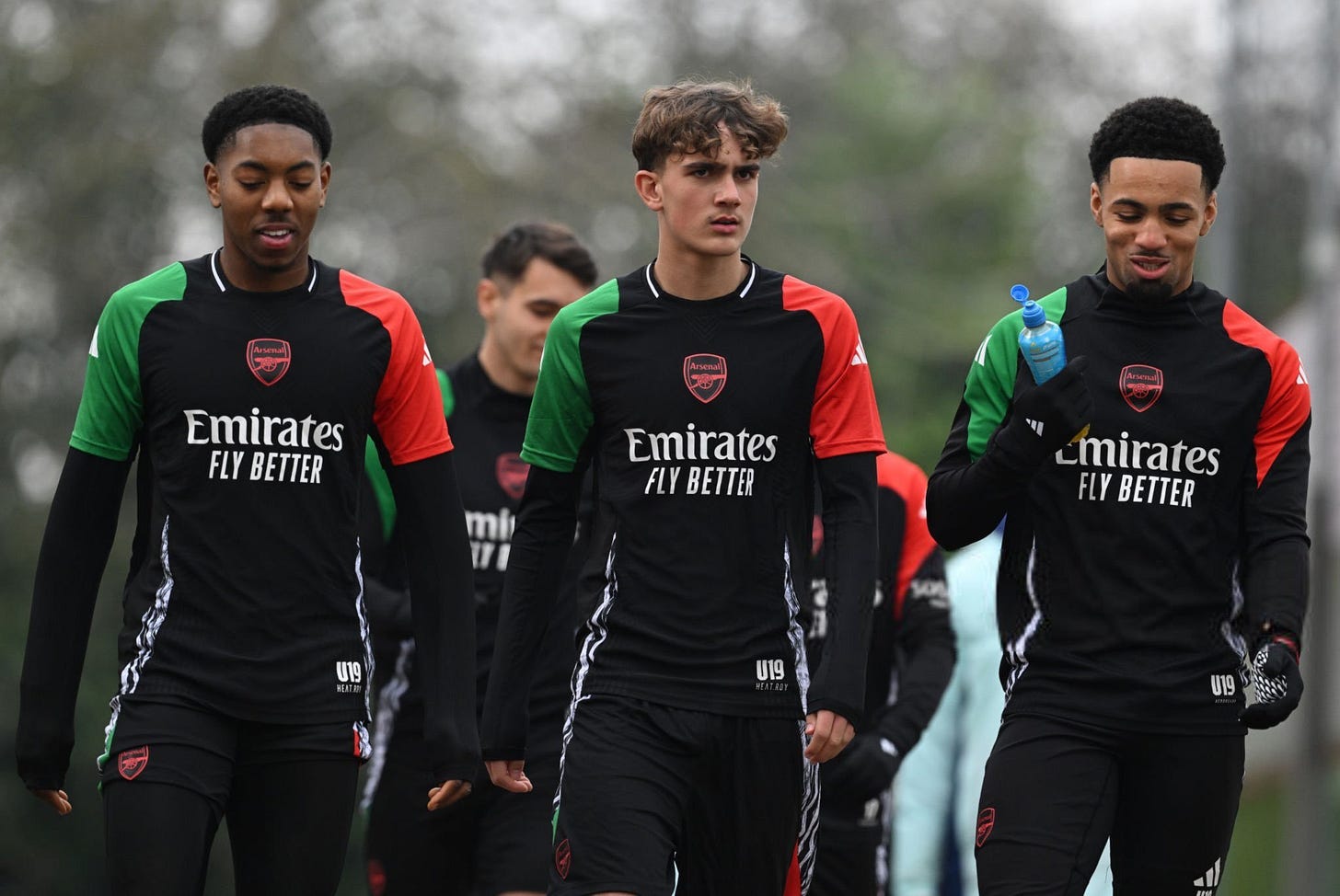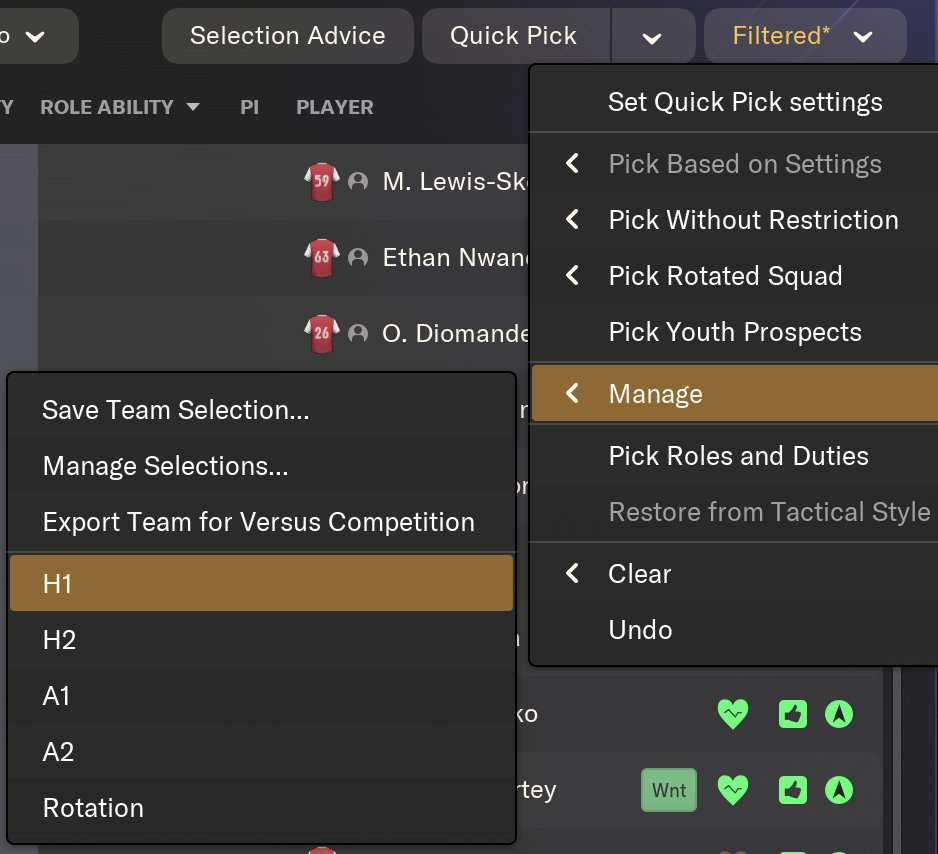Structured squad rotation is a tangible squad management framework that optimises game time management and team selections to achieve consistent performance through increasingly relentless seasons, ensuring your squad is fit, sharp, and available for your most important games, and that every player in your squad is used effectively.
Game Time Management
Effective game-time management consists of balancing 3 components:
Overall team game time each season
Optimal game time for each player
Squad dynamics
The overall game time your team is expected to play in a season should balance as closely as possible with the cumulative optimal game time for each of the players in your squad.
Overall Team Game Time
An elite club competing on all fronts can play 50-65+ competitive matches - 4,500 - 6,000+ minutes - of competitive football per season.
38 Premier League games = 3,420 minutes
8-15+ Champions League games = 720-1,350+ minutes
1-6+ FA Cup games = 90-540+ minutes
1-5+ League Cup games = 90-450+ minutes
Charity Shield & UEFA Super Cup = 180 minutes
Of course, this is before potential extra time, replays, international football, and the Club World Cup, which could easily add another 600+ minutes.
A team aiming to challenge for every trophy can play up to 60,000 minutes per season, spread across the 10 outfield players.
Optimal Game-Time
Finding the optimal game time for each player is a balancing act; players need game time in order to develop, gain match fitness, and remain happy; however, too much game time can result in burnout, fatigue, and injury.
Optimal game time will vary between different players depending on player age, ability, and competition within the squad.
Based on my experience, elite outfield players should typically aim for 3,000 to 4,000 minutes per season; more than this quickly increases injury of burnout, injury, and fatigue.
Younger, older, or injury-prone players typically slightly less, around 2,000 to 3,000 minutes per season; less than this increases the likelihood that a player will become unhappy, struggle for match fitness, and stall in their development.
Very young, very old, or very injury-prone players could even play 1,000 to 2,000 minutes per season, however, such limited game-time is unlikely to keep players happy, match-fit, or provide enough stimulus to sustain development, and such limited contribution is not an effective use of club resources.
Squad Dynamics
A flexible core of 16-18 players - 15-17 outfield - each playing 3,000 to 4,000 minutes is optimal to sustain elite performance through 50-65+ competitive matches in a season.
Rather than a traditional ‘top down’ approach - typically a first 11 with backups - I have recently enjoyed a lot of success with a ‘bottom up’ approach where my 16-18 player squad consists of:
10-11 flexible first team players
5-6 star players
First team goalkeeper + Cup goalkeeper
Unlike traditional backup/rotation players, the ‘floor’ of the squad is extremely high-quality first-team players; my goal is that this group is eventually strong enough to win the league themselves, independent of the 5-6 star players.
These first team players play a significant amount of football so are happy, match fit, and make a meaningful contribution over a season; they also make long-term squad development considerably more stable as most players will be happy in this role for a lot longer than a typical backup/rotation role.
Team Selection
The Team Selection component of Structured Squad Rotation involves consistent, sustainable squad rotation; distributing game-time effectively throughout the squad, peaking at the right time, in the biggest games.
We achieve this by preparing context-specific Team Selection templates:
Home vs top-half opposition (Premier League & Champions League)
Away vs top-half opposition (Premier League & Champions League)
Home vs bottom-half opposition (Premier League & Champions League)
Away vs bottom-half opposition (Premier League & Champions League)
Domestic Cups
We effectively distribute game time by ensuring each player in the squad plays in three selections and rests in two; this ensures each player starts around 60% of games.
Star players:
Play against top-half opponents
Rest in domestic cups
Play one, rest one against bottom-half opponents
First Team players
Play in domestic cups
Rotate again any two of the top or bottom-half opponents
Home vs Top-Half opposition
Strongest possible defence; “the Wall of N5”
Expansive, dynamic Rice, Myles & Odegaard midfield
Most creative attack with Mora, Saka, and Nwaneri
Away vs Top-Half opposition
“Wall of N5” defence
Most physical midfield; Tchouameni swapping in for Myles
Transitional attack; Martinelli in for Mora
Home vs Bottom-Half opposition
Game time for Daga and Colwill at the back
Expansive midfield with two 10s; Ødegaard and Nypan
Creative attack with Mora, Dowman, and Nwaneri
Rice, Saka, and Hato drop to the bench
Away vs Bottom-Half opposition
Game time for Daga and Colwill at the back
Expansive, dynamic Rice, Myles, and Nypan midfield
Hybrid attack with Martinelli, Dowman, and Saka
Saliba, Odegaard, and Nwaneri drop to the bench
Domestic Cups
Saliba, Hato, Rice, Odegaard, Saka, and Nwaneri all rest
Practical Tips
A couple of practical tips which didn’t fit in elsewhere:
Try to stick to Squad Player, Regular Starter or Important Player squad status during contract negotiations; avoid Star Player status, where possible.
Promise unhappy players more game time; in most cases the issue is unevenly distributed fixtures and quickly balances out.
A small squad means you can pay high wages while still maintaining a low overall wage expenditure.
Take advantage of your substitutes; done correctly, you will have a strong bench in every game.
Thank you
Thank you very much, once again, for reading and supporting my writing.
Please be sure to subscribe, share, and follow if you enjoy this type of Football Manager content.
















